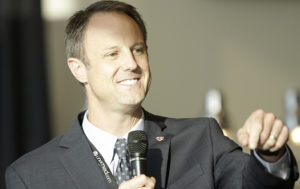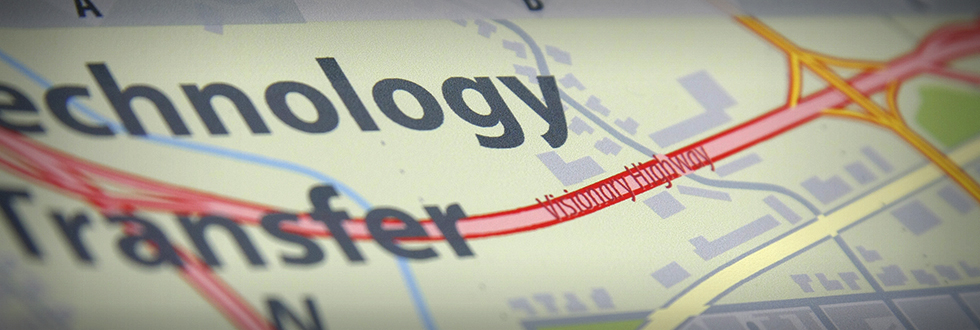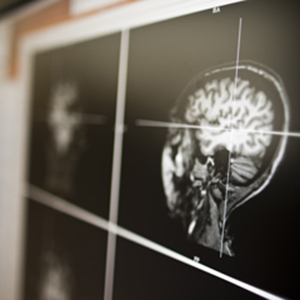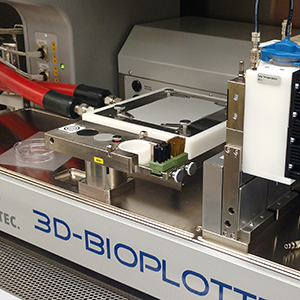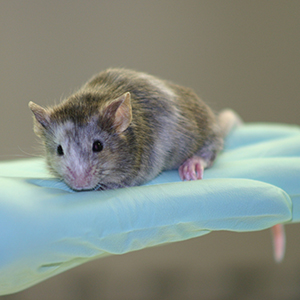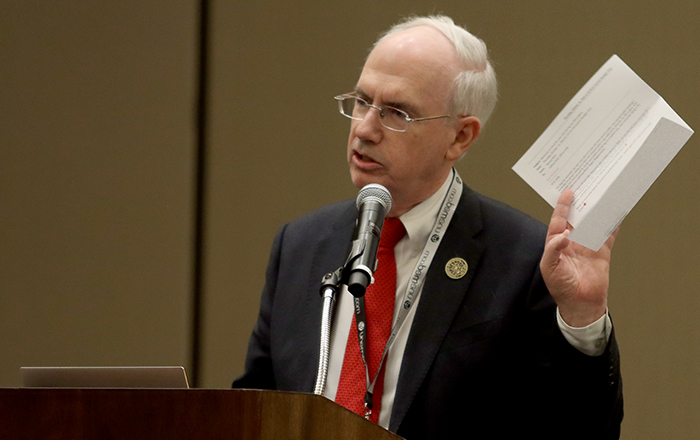
During opening remarks at UNeMed’s 2022 Innovation Awards ceremony on Thursday, Oct. 13, 2022, at the Hilton Omaha, UNMC Chancellor Jeffrey Gold, MD, told the audience he received a thank-you email earlier that day from a patient he successfully treated about 30 years ago, who was saved from a congenital heart defect with a new surgical innovation at the time. Dr. Gold said that her successful treatment started out as just an idea; an idea that was patented, licensed and eventually developed for commercial use. Holding up the printed letter, he told the roomful of UNMC and UNO innovators, “We can do this.”
OMAHA, Nebraska (October 14, 2022)—UNeMed’s annual Innovation Week concluded last night with its Research Innovation Awards Ceremony, as UNMC researcher Bin Duan, PhD, took the top prize as UNeMed’s Emerging Inventor.
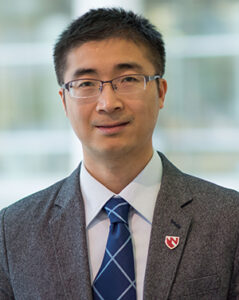
Bin Duan, PhD
Other top awards included the Startup of the Year and the Most Promising New Invention of 2022. UNeMed also presented former Vice Chancellor for Research Jennifer Larson, MD, with an award in recognition and gratitude of her dedication and service to innovation and commercialization at UNMC.
The ceremony featured remarks from UNMC Chancellor Jeffrey Gold, MD, and UNO Chancellor Joanne Li, PhD. UNeMed’s CEO and President Michael Dixon, PhD, delivered a short presentation in review of the previous fiscal year.
The awards ceremony recognized all UNMC and UNO inventors who contributed to a new invention disclosure, had U.S. patent issued or had a technology licensed.
Dr. Duan, an associate professor in the Department of Internal Medicine, earned the Emerging Inventor award for his work in biomaterials and tissue engineering.
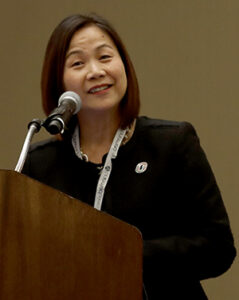
UNO Chancellor Joanne Li, PhD
He was listed as an inventor on 13 new inventions submitted during the last five years, and has six pending patent applications. His work focuses on novel biomaterials and biofabrication techniques—including 3D bioprinting—to enhance human regenerative processes and promote various types of wound healing. He has developed numerous hydrogels and tissue-engineered scaffolds for various clinical applications including bacterial biofilm prevention, localized drug delivery, muscle and nerve regeneration, and postoperative abdominal adhesion prevention.
Dr. Duan’s work with UNeMed’s 2015 Innovator of the Year, Tammy Kielian, PhD, on a 3D printed antibiotic craniotomy scaffold has garnered interest from more than a dozen companies, and is currently patent-pending in the U.S. and in Europe.
Dr. Duan’s two inventions from 2022 are a novel, 3D-printable bio-ink; and a 3D-printable, refillable hydrogel drug depot for localized, sustained delivery of therapeutic agents.
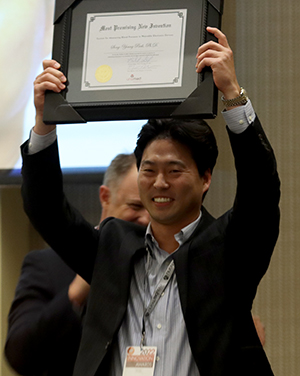
During the 2022 Innovation Awards ceremony on Thursday, Oct. 13, 2022, at the Hilton Omaha, UNO researcher Song-young Park, PhD, hoists his award for developing the Most Promising New Invention of the year with Cody Anderson (not pictured). Dr. Park’s and Anderson’s invention is a “System for Measuring Blood Pressure in Wearable Electronic Devices.”
UNeMed presented the Most Promising New Invention of 2022 award to a pair of UNO researchers in the School of Health and Kinesiology: Doctoral research assistant Cody Anderson and his graduate mentor, Song-young Park, PhD.
Their invention—a system for measuring blood pressure in wearable electronic devices, such as smart watches—produces an accurate and reliable way for people to track their blood pressure, in real-time, without the need for specialized equipment or training.
The innovative approach measures the speed of a user’s pulse wave, which spreads throughout the body with every heartbeat. Pulse wave velocity is a proven measure for finding blood pressure and blood vessel stiffness, important biomarkers for determining and predicting cardiovascular health.
The innovation could allow people to monitor and control their cardiovascular health virtually anywhere—while also helping reduce cardiovascular disease and associated costs.
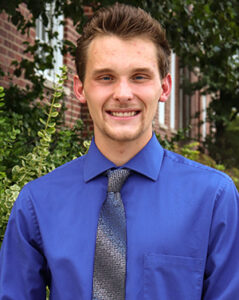
Cody Anderson
Finally, UNeMed presented UNMC researchers Howard Gendelman, MD, and Benson Edagwa, PhD, with the 2022 Startup of the Year Award for the company they co-founded: Exavir Therapeutics.
Dr. Gendelman is Professor and Chair of the Department of Pharmacology and Experimental Neuroscience. Dr. Edagwa is an Associate Professor in the same department.
Exavir Therapeutics is currently developing ultra-long-acting antiretroviral nanomedicines. These nanomedicines enable long-acting slow effective release of antiretroviral therapy over time, potentially allowing for dosing once every six months or longer.
Exavir Therapeutics is also working on developing CRISPR-Cas9-based therapies as a potential cure for HIV infections.
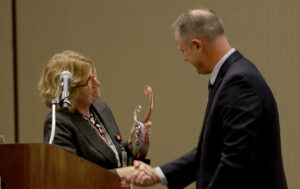
Former UNMC Vice Chancellor for Research, Jennifer Larsen, MD, (left) accepts an award from UNeMed President and CEO Michael Dixon.
In May 2022, Exavir Therapeutics successfully closed on a $4 million seed-financing round that will help advance Exavir’s lead formulation toward a clinical trial.
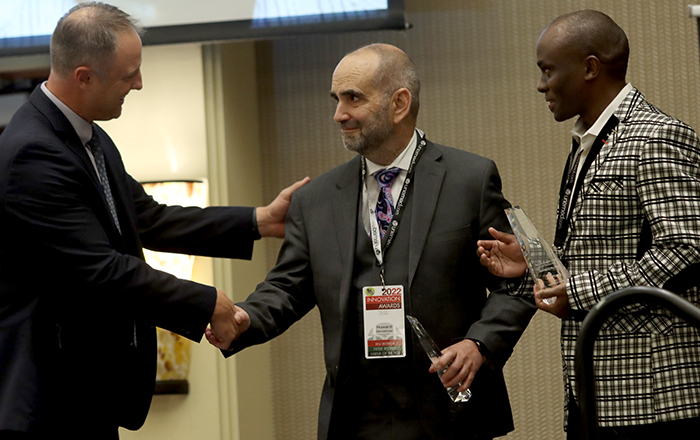
During 2022 Innovation Awards ceremony on Thursday, Oct. 13, 2022, at the Hilton Omaha, UNeMed President & CEO Michael Dixon, PhD, (left) presents UNMC researchers Howard Gendelman, MD, (center) and Benson Edagwa, PhD, with the Startup of of the Year award in recognition of the recent success of Exavir Therapeutics, a company they co-founded based on the antiretroviral therapeutics they’ve developed at UNMC.
Innovation Week began, Monday, Oct. 10 with the Kick-Off that featured free T-shirts, coffee and doughnuts, along with the chance to meet UNeMed staff—followed by a panel discussion about technology transfer and commercialization. Innovation Week continued on Tuesday with a seminar about drug discovery and a networking event at a local tavern. Then, on Wednesday, UNeMed hosted two more seminars beginning with a entrepreneur faculty mixer in the morning and software commercialization panel in the afternoon.
Prior to the awards ceremony on Thursday, UNeMed hosted a panel discussion about SBIR/STTR grant awards.
More information about Innovation Week and the Innovation Awards ceremony, including its history and awardees, can be found at https://www.unemed.com/innovation-week.
Fullscreen Mode
Read article
 OMAHA, Nebraska (October 20, 2022)—Today more than 100 attendees gathered at the University of Nebraska Medical Center to learn about Nebraska’s contribution and leadership in the bioscience and medtech industries. The Innovate Conference, hosted by the Greater Omaha Chamber, Bio Nebraska, Omaha Public Power District and UNeMed, put a spotlight on the many Nebraska-based medical breakthroughs and unique opportunities that have propelled advancements in public health, patient outcomes and commercial patents.
OMAHA, Nebraska (October 20, 2022)—Today more than 100 attendees gathered at the University of Nebraska Medical Center to learn about Nebraska’s contribution and leadership in the bioscience and medtech industries. The Innovate Conference, hosted by the Greater Omaha Chamber, Bio Nebraska, Omaha Public Power District and UNeMed, put a spotlight on the many Nebraska-based medical breakthroughs and unique opportunities that have propelled advancements in public health, patient outcomes and commercial patents.







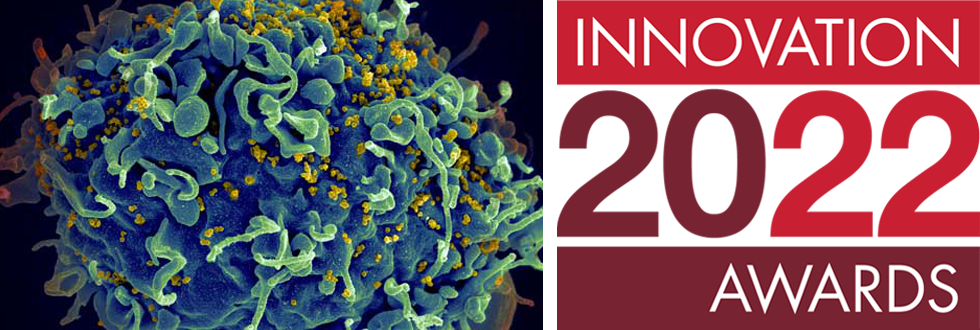
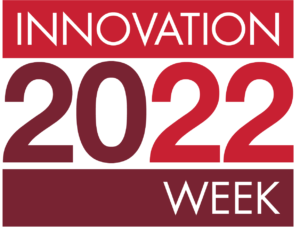 OMAHA, Neb. (October 12, 2022)—Innovation Week continues today with two more events: One mixer and one panel discussion aimed at faculty, staff and students at UNMC and UNO.
OMAHA, Neb. (October 12, 2022)—Innovation Week continues today with two more events: One mixer and one panel discussion aimed at faculty, staff and students at UNMC and UNO.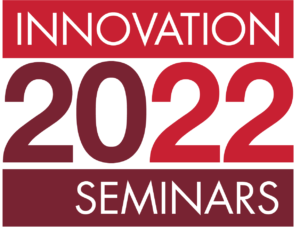 OMAHA, Neb. (October 11, 2022)—Innovation Week continues today with two events, a drug discovery seminar for academic researchers and a networking event aimed at current and aspiring entrepreneurs.
OMAHA, Neb. (October 11, 2022)—Innovation Week continues today with two events, a drug discovery seminar for academic researchers and a networking event aimed at current and aspiring entrepreneurs.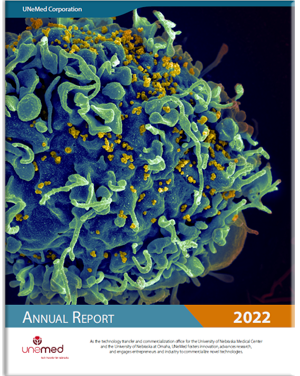
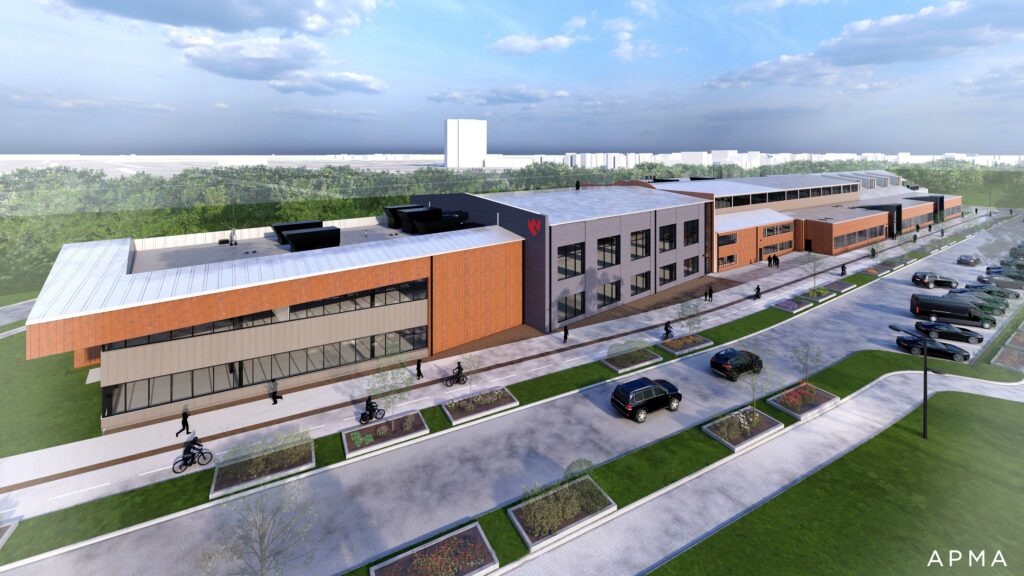
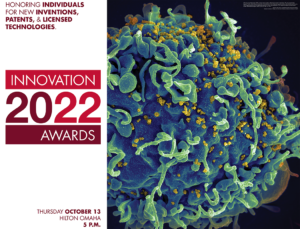
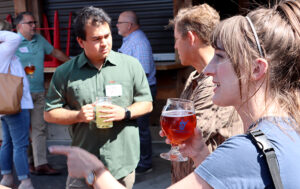 OMAHA, Nebraska (July 14, 2022)—UNeMed presented its first Innovations and Libations networking event Tuesday night, hosting a lively group of University innovators and key members of Omaha’s entrepreneurial community.
OMAHA, Nebraska (July 14, 2022)—UNeMed presented its first Innovations and Libations networking event Tuesday night, hosting a lively group of University innovators and key members of Omaha’s entrepreneurial community.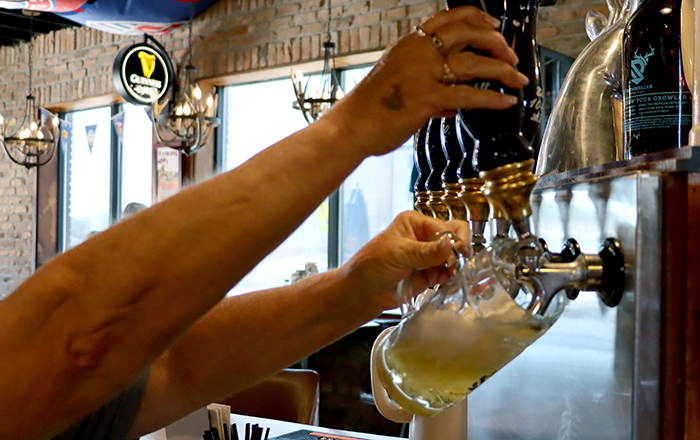
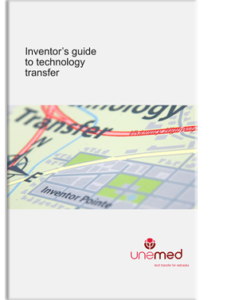 OMAHA, Nebraska (May 20, 2022)—UNeMed released today the print version of its updated Inventor’s Guide to Technology Transfer.
OMAHA, Nebraska (May 20, 2022)—UNeMed released today the print version of its updated Inventor’s Guide to Technology Transfer.